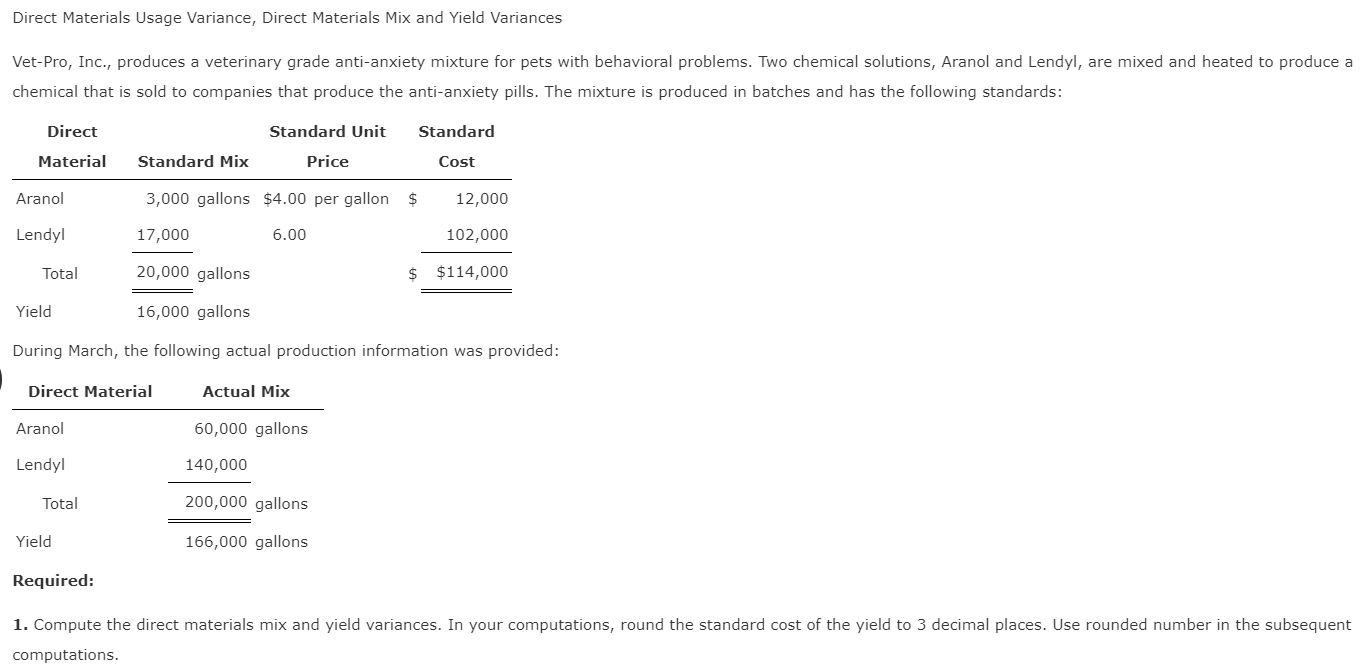
If direct materials is the cause of adverse variance, then purchase manager should bear the responsibility for his negligence in acquiring the right materials for his factory. The direct labor efficiency variance may be computed either in hours or in dollars. Suppose, for example, the standard time to manufacture a product is one hour but the product is completed in 1.15 hours, the a board member’s guide to nonprofit overhead variance in hours would be 0.15 hours – unfavorable. If the direct labor cost is $6.00 per hour, the variance in dollars would be $0.90 (0.15 hours × $6.00). For proper financial measurement, the variance is normally expressed in dollars rather than hours. The direct labor variance measures how efficiently the company uses labor as well as how effective it is at pricing labor.
Direct Labor Yield Variance FAQs

Companies may need to adjust their labor cost assumptions, which can affect everything from pricing strategies to capital investment decisions. Accurate variance analysis thus becomes a critical tool for financial managers aiming to maintain fiscal discipline and operational efficiency. If we compute for the actual rate per hour used (which will be useful for further analysis later), we would get $8.25; i.e. $325,875 divided by 39,500 hours.
- Conversely, it would be unfavorable if the actual direct labor cost is more than the standard direct labor cost allowed for actual hours worked.
- In this case, the actual rate per hour is $7.50, the standard rate per hour is $8.00, and the actual hour worked is 0.10 hours per box.
- All such information is provided solely for convenience purposes only and all users thereof should be guided accordingly.
- Favorable overhead variances are also known as “overapplied overhead” since more cost is applied to production than was actually incurred.
How do you calculate labor yield variances?
In this case, the actual rate per hour is \(\$9.50\), the standard rate per hour is \(\$8.00\), and the actual hours worked per box are \(0.10\) hours. Standard costs are used to establish theflexible budget for direct labor. The flexible budget is comparedto actual costs, and the difference is shown in the form of twovariances. It is defined as the differencebetween the actual number of direct labor hours worked and budgeteddirect labor hours that should have been worked based on thestandards. Direct labor rate variance is equal to the difference between actual hourly rate and standard hourly rate multiplied by the actual hours worked during the period. The variance would be favorable if the actual direct labor cost is less than the standard direct labor cost allowed for actual hours worked by direct labor workers during the period concerned.
Do you own a business?
ABC Company has an annual production budget of 120,000 units and an annual DL budget of $3,840,000. Four hours are needed to complete a finished product and the company has established a standard rate of $8 per hour. The company used 39,500 direct labor hours and paid a total of $325,875.
Suppose the standard hours for producing 500 units are 800 hours, but the actual hours worked are 900. With a standard labor rate of $20 per hour, the labor efficiency variance would be (800 – 900) x $20, equating to a $2,000 unfavorable variance. This suggests inefficiencies in the production process, possibly due to inadequate training or outdated equipment.
Favorable and unfavorable variance
Software solutions like IBM Watson Analytics or SAS Advanced Analytics can facilitate these predictive capabilities, providing a competitive edge in labor cost management. Labor yield variance arises when there is a variation in actual output from standard. Since this measures the performance of workers, it may be caused by worker deficiencies or by poor production methods.
The logic for direct labor variances is very similar to that of direct material. The total variance for direct labor is found by comparing actual direct labor cost to standard direct labor cost. If actual cost exceeds standard cost, the resulting variances are unfavorable and vice versa. The overall labor variance could result from any combination of having paid laborers at rates equal to, above, or below standard rates, and using more or less direct labor hours than anticipated. In this case, the actual hours worked per box are 0.20, the standard hours per box are 0.10, and the standard rate per hour is $8.00. This is an unfavorable outcome because the actual hours worked were more than the standard hours expected per box.
However, these workers may cause the quality issues due to lack of expertise and inflate the firm’s internal failure costs. In order to keep the overall direct labor cost inline with standards while maintaining the output quality, it is much important to assign right tasks to right workers. As stated earlier, variance analysis is the controlphase of budgeting. This information gives the management a way tomonitor and control production costs. Next, we calculate andanalyze variable manufacturing overhead cost variances.
Training employees in these methodologies not only boosts productivity but also fosters a culture of continuous improvement, which is essential for long-term variance reduction. Additionally, labor mix variance plays a role, particularly in environments where multiple types of labor are employed. This variance occurs when the proportion of different labor categories used deviates from the standard mix. For example, if a project requires a higher proportion of skilled labor than initially planned, the labor mix variance will reflect this shift, potentially leading to higher costs. Learn how to manage labor variance effectively with insights on components, calculations, influencing factors, and strategies to optimize financial performance.
As with direct materials variances, all positive variances areunfavorable, and all negative variances are favorable. We might have the same number of hours at a different hourly rate, or more hours at the same rate, or some combination of these factors. Let’s first look at the standard cost variance analysis chart for labor variances.
Conversely, it would be unfavorable if the actual direct labor cost is more than the standard direct labor cost allowed for actual hours worked. Like direct labor rate variance, this variance may be favorable or unfavorable. If workers manufacture a certain number of units in an amount of time that is less than the amount of time allowed by standards for that number of units, the variance is known as favorable direct labor efficiency variance. On the other hand, if workers take an amount of time that is more than the amount of time allowed by standards, the variance is known as unfavorable direct labor efficiency variance. Hitech manufacturing company is highly labor intensive and uses standard costing system.


